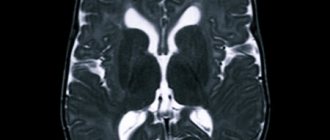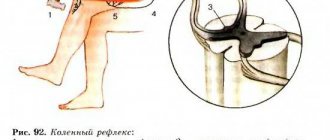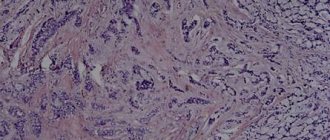The spinal cord is an important organ that provides hematopoiesis. It is responsible for maintaining the level of white blood cells, that is, it is responsible for the body's immune system. Spinal cord cancer is a serious cancer that affects the central nervous system. Patients often perceive it as a death sentence. However, the level of modern medicine makes it possible not only to slow down the disease, but in some cases to completely get rid of the pathology.
Classification of spinal cord cancer
There are several classifications of the disease based on different principles. Thus, according to the place of origin of the primary focus, they distinguish:
- primary tumor - malignant cells are formed directly in the spinal cord, its membrane, roots, vertebrae;
- secondary tumor - metastasis from other organs (prostate, gastrointestinal tract, lungs, breast, thyroid) to the spinal cord.
Based on the location of spinal cord oncology, the following are distinguished:
- extramedullary (account for 80-95% of all cases) - do not grow directly into the brain, but are grouped around it. This type includes: lipoma, schwannoma, myeloma, osteosarcoma, meningioma, neurofibrioma, neuroma, hemengioblastoma.
- intramedullary (5-20% of all cases) – develop in the spinal cord (astrocytoma, glioma, ependymoma).
Tumors can form in different parts of the spinal column, which affects the symptoms of spinal cord cancer that appear. According to this principle, the following neoplasms are distinguished:
- cervical;
- lumbosacral;
- chest;
- horse tail;
- conus medullaris.
Stages of spinal cord cancer
- The neurological stage lasts a long time (sometimes 10-15 years). It is characterized by muscle weakness, discomfort during flexion and extension, disturbances in conductive sensitivity, and occasional back pain. Patients do not attach importance to these symptoms and do not suspect that they have cancer.
- The second stage occurs when the tumor increases in size. Sensory disturbances worsen, radicular pain appears, and partial paralysis of the legs occurs. In some cases, the second stage drops out, and the disease immediately enters the final period.
- The third stage of spinal cord cancer is characterized by motor, sensory disorders, and pelvic dysfunctions. The pain syndrome increases. Limbs are paralyzed in pairs or completely. After three months, the symptoms reach their peak and complete paralysis occurs. The entire third stage lasts about six months.
Symptoms and signs of spinal cord cancer
Symptoms vary depending on the duration of the disease. In the initial stages, the disease almost does not manifest itself. Most symptoms of spinal cord oncology are detected in the second and third stages, and they differ depending on the type of tumor and the location.
The main symptoms of spinal cord cancer that appear in the initial stages include:
- decreased performance, fatigue, drowsiness, nausea, vomiting;
- pain in the back and limbs is one of the first signs of spinal cord cancer;
- problems with coordination of movements;
- feeling of changes in the legs: tingling, numbness, muscle twitching, flushes of heat, cold;
- skin allergic reactions;
- genitourinary problems, including decreased libido.
Later, these symptoms of spinal cord cancer worsen, and new signs appear:
- severe pain in the back and limbs;
- loss of sensation in various parts of the body;
- problems with swallowing and speech;
- paralysis, often complete;
- urinary, fecal incontinence, constipation;
- cardiac dysfunction.
Symptoms of spinal cord tumors
It is impossible to determine exactly what type of tumor there is and what its features are only on the basis of complaints, a routine examination or x-ray. To develop the correct algorithm for therapeutic actions to combat an existing tumor, neurologists and neurosurgeons use paraclinical methods, exclusively in combination, and not selectively taken. They are represented by numerous laboratory and instrumental research methods. Their purely complex combination will make it possible to bring clarity and objectivity to the clinical picture, make an accurate diagnosis and achieve a positive result in the treatment of the patient. But we’ll talk about diagnostics a little later; now we’ll provide guidance on the main clinical stages of spinal cord tumors.
We suggest that you familiarize yourself with the stages of development of extramedullary OSM, since they are the ones that lead in the frequency of development. So, pathogenesis is conventionally classified into the 1st, 2nd and 3rd stages, which may not always be clearly distinguishable, let’s consider them.
- The first stage is radicular. Its course lasts from several months to 3-5 years. A characteristic symptom for the initial form of the disease is the occurrence of pain in the area of innervation of certain nerve roots, as a result of their irritation by the tumor object. The pain syndrome is of a girdling or compressive nature. It is most pronounced with cervical lesions and pathology that occurs in the so-called cauda equina. The increase in painful sensations naturally occurs at night, which interferes with normal sleep in a lying position. This stage is often associated with diagnostic errors. When making a diagnosis, some incompetent doctors mistakenly make diagnoses such as cholecystitis, appendicitis, fibrinous pleurisy, cardiac disorders, radiculitis, osteochondrosis, etc.
- The second stage is Brown-Séquard syndrome. It includes a symptom complex characteristic of lesions of half the diameter of the spinal cord: spastic paresis on the side of neoplasia, loss of deep sensitivity (sense of body weight, pressure and vibration, muscle-articular disorders, etc.), disturbance of graphesthesia. On the opposite side of the body, there is a dullness of pain, temperature and, less often, tactile perceptions. This stage does not last long; it is replaced by the most critical phase.
- The third stage is paraplegic. It consists of a complete transverse lesion of the spinal cord and, as a result, paralysis of the upper or lower extremities occurs. Against the background of damage to the diameter, serious problems with the pelvic organs and paresis develop. The approximate duration of this phase is 2-3 years, but in some situations it lasts from 10 years or more. The prognosis for recovery, with the final stage in full swing, is disappointing; the patient’s chances of functional recovery are negligible.
Need to know! Total damage to the diameter, in addition to complete loss of limb mobility, is extremely dangerous, especially if the lesion is located in the cervical or thoracic area. This scenario of events can extremely disrupt the functions of the heart and lungs, up to a sudden fatal outcome due to their failure. Note that approximately 65%-70% of spinal neoplasias are related to the thoracic and cervical spine. Most extradural OSMs, including the most common ones, are completely resectable. And in the first two stages, their surgical excision inspires maximum hope for a complete cure of the disease.
Causes and risk factors
The etiology of the disease has not been established, but doctors have found that the following causes contribute to its occurrence:
- bad heredity: close relatives had spinal cord cancer;
- the presence of spinal cord lymphoma, leukemia, or HIV, Hippel-Lindau disease;
- there is already a history of other cancers;
- presence of neurofibromatosis;
- spinal cord injuries;
- unhealthy lifestyle, decreased immunity.
Provoking factors are:
- radioactive radiation, including solar radiation;
- influence of microwave and electromagnetic devices;
- prolonged exposure to harmful chemicals;
- unfavorable environmental conditions;
- repeated stressful situations.
When to see a doctor
Sometimes spinal cord cancer is discovered accidentally during tests performed for another reason. The pathology does not have pronounced symptoms in the initial stages of development. It is necessary to contact an oncologist in the following cases:
- there are even minor painful sensations in the spine;
- you should be concerned if shooting pain is localized in any part of the spinal column;
- You can’t ignore numbness in the legs, tingling, hot and cold flushes to the extremities.
At Onco, located in the center of Moscow, you can make an appointment with an oncologist. The doctor will examine the patient, draw up a plan for a comprehensive examination, after which a diagnosis will be made and treatment will be prescribed.
Diagnosis of spinal cord oncology
In order to make a correct diagnosis, after an examination by an oncologist, an examination by a neurologist is required. He will determine the extent of existing neurological damage and check for diseases such as multiple sclerosis, osteochondrosis and others with symptoms similar to spinal cord cancer.
An instrumental examination will help confirm or refute the diagnosis:
- radionuclide diagnostics. Modern radionuclide diagnostic methods are used, based on the ability of cancer cells to accumulate radioactive isotopes to a greater extent than healthy tissue. Our clinic uses radionuclide diagnostic methods such as PET/CT, SPECT, scintigraphy;
- Magnetic resonance imaging allows you to see sections of the spine. The method reveals the slightest deviations. Particularly effective in identifying soft tissue neoplasms;
- Computed tomography can detect pinched nerves, narrowing of the spinal canal, and obtain data on the size of the tumor. The method is not designed for frequent use, since the patient receives a dose of radiation that can accumulate during repeated examinations;
- biopsy. A tumor sample is taken, which is examined in the laboratory, determining the type of cancer, as well as its degree of malignancy.
You can undergo a full examination at the oncology department, which is located in the Central Administrative District. The medical institution is equipped with the latest high-tech equipment, which is not available in all capital clinics. Diagnostics are carried out by doctors who have completed internships in the USA, Israel, and Germany.
Diagnosis and treatment
What methods can be used to detect spinal cancer?
To make a diagnosis, the following are most often used:
- Blood chemistry;
- Magnetic resonance imaging (MRI) of the spine;
- Radiography;
- Computed tomography;
- Ultrasound;
- Biopsy;
- Myelography (a contrast agent is injected into the spinal canal, with the help of which the tumor will be visible on tomography).
Answer to the question: what is the difference between CT and MRI, which is better? – read here.
Treatment is prescribed taking into account all factors of the disease: stage, tumor size, presence of metastases. It can be surgical or non-surgical.
Non-surgical treatments include:
- Chemotherapy involves the use of drugs that inhibit cell growth. But, along with cancer cells, healthy cells are also damaged, which leads to severe side effects;
- Radiation therapy kills slave cells using different types of radiation: x-rays and gamma rays. Most often, this method is used for inoperable and metastatic tumors or after surgery to remove remnants;
- In some cases, hormones are used that inhibit the growth of cancer cells. This method does not provide a complete cure, but can prolong a person’s life by 3-5 years;
- Immunotherapy is based on strengthening the immune system to more effectively fight malignant tumors;
- Taking painkillers, psychiatric medications, and even narcotics to help cope with severe pain and depression.
To ensure effective treatment, several of these methods are combined. After the course of treatment, the patient needs constant monitoring.
We advise you to study – Corset for the thoracic spine
Spinal surgeries are used in exceptional cases, because there is a risk of damage to the spinal cord. There are also options for the development of new metastases if not all tumor cells were removed.
But, if there is such a possibility, the tumor is always removed. Rehabilitation after surgery takes from several weeks to several months.
Read about dorsalgia of the thoracic spine here.
To prevent cancer:
- Beware of contact with various chemicals that can cause cancer;
- avoid prolonged exposure to radiation and bad habits such as smoking and drinking alcohol;
- Lead an active lifestyle and watch your weight.
- and, most importantly, undergo periodic examinations - this, in any case, will only bring benefits.
Spinal cord cancer treatment
Treatment of the tumor should be started as quickly as possible, without waiting for the process to spread and pathological symptoms to increase. We use advanced techniques for treating spinal cord cancer, including:
- surgery. Surgery is an effective method of treating oncology. In the oncology department, all operating rooms are equipped with innovative equipment, which allows radical and laparoscopic operations to be performed. The main emphasis is on organ-preserving interventions. Surgical operations are carried out under the control of sophisticated equipment;
- chemotherapy. Chemotherapy complements surgical treatment, and in some cases serves as the only method of combating the tumor. Drugs are prescribed taking into account the nature of the tumor formation and the patient’s health status. In most cases, doctors select a complex combination of chemotherapy drugs. If high doses of chemotherapy are needed, then for spinal cord cancer they resort to a bone marrow transplant;
- radiotherapy. This treatment method is based on suppressing the tumor with ionizing radiation. The radiation damages the DNA of cancer cells, which stops them from dividing. Remote devices are used, the introduction of radioactive elements into the tumor, and the introduction of pharmacological drugs containing radioactive substances. Fractionated and coarse-fractionated radiotherapy is especially effective.
Diagnosis of spinal cord tumors and treatment principles
The principle of examination for suspected ACM, as indicated initially by signs and symptoms, is not limited to radiography alone; in some cases it does not have any particular informative value. Correct diagnosis involves a multi-complex examination of the body, including:
- assessment of medical history and visual palpation examination;
- conducting neurological tests;
- studying a number of laboratory tests (urine, blood);
- myelographic examination;
- CT and MRI (magnetic resonance imaging provides maximum information);
- spinal tap;
- histological biopsy.
We have listed the standard range of diagnostic measures, however, exactly what types of studies neurodiagnostics will be based on is decided solely by a specialist on an individual basis. As for treatment, the basic tactic for such a medical problem is surgical resection of the spinal tumor. In case of benign encapsulated OSM (meningioma, schwannoma, etc.), full-volume removal is safely performed without the use of radiation. Tumors such as gliomas cannot be completely removed, and therefore they are partially resected, and then radiotherapy is used.
Radiography.
If the lesion is secondary or located in a difficult-to-reach location, radiation therapy may be the primary treatment, but in some cases, radical removal followed by courses of radiotherapy may be undertaken. Chemotherapy is used when absolutely necessary and only in combination with radiation treatment, since its use alone for ACM is not successful.
Prognosis for this type of oncology
It is impossible to definitively answer how long patients with spinal cord cancer live. A positive prognosis is possible if the disease is detected at an early stage of development. In this case, the survival rate (taking into account the first five years after treatment) approaches one hundred percent.
If pathology is detected at a later stage, survival rate is within four years. The percentage of survivors ranges from 7 to 25%. As a rule, such patients remain disabled. Thus, to know how many people live with symptoms of spinal cord cancer, you need to take into account the time of their onset.
In order not to add to the sad statistics, the first manifestations of pathology cannot be ignored. At the slightest suspicion, you should undergo diagnostic procedures, which will take very little time, but will allow you to avoid irreversible consequences.
Surgery is the only chance
The only method that helps get rid of formations in the spinal cord is surgery. This procedure is 100% effective for benign tumors.
We advise you to study - How is endoscopic removal of a spinal hernia performed?
Pain can be reduced through the use of restorative and painkillers. Favorable results are always achieved after surgery to solve the problem of a benign tumor. The results of this treatment method can most successfully be determined through diagnostics.
The radical removal technique is also used for malignant tumors. Postoperative radiography procedure can significantly reduce the rate of development of tumor tissues and alleviate some neuropathological symptoms. The indication for using this technique is severe pain.
The prognosis for the effectiveness of surgical intervention may be determined by the histological nature of the formation, its location and size. Timely surgical intervention most often leads to absolute recovery.
How to make an appointment with an oncologist
If you are concerned about the symptoms of spinal cord cancer described above, then you need to make an appointment with an oncologist and undergo the examination prescribed by him. It is likely that the symptoms are hiding harmless diseases, in which case, after the examination, your life will become calmer. If cancer is detected, it is necessary to undergo treatment.
To make an appointment with an oncologist, please call. You can make an appointment with a doctor on the clinic’s website by filling out the appropriate form. The cancer center is located in the center of Moscow, it is easy to reach, nearby are the Mayakovskaya, Chekhovskaya, Novoslobodskaya and others metro stations. Spinal cord cancer is a dangerous pathology, but taking into account the achievements of modern medicine and subject to early detection of the oncological process, one can hope for a cure.







